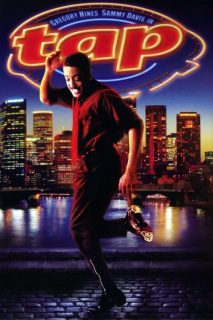
- Year: 1949
- Released: 11 May 1949
- Country: France
- Adwords: 2 nominations
- IMDb: https://www.imdb.com/title/tt0040497/
- Rotten Tomatoes: https://www.rottentomatoes.com/m/jour_de_fete
- Available in: 720p, 1080p,
- Language: French
- MPA Rating: Not Rated
- Genre: Comedy
- Runtime: 70 min
- Writer: Jacques Tati, Henri Marquet, René Wheeler
- Director: Jacques Tati
- Cast: Jacques Tati, Guy Decomble, Paul Frankeur
- Keywords: postman,
 | 7.2/10 |
 | 100% – Critics |
 | 83% – Audience |
Jour de Fête Storyline
François is a postal delivery man in a small French country town. He is often the center of attention in the town, which is not always a good thing. He tries to be helpful but most in town mock him behind his back. At the Bastille Day festivities in the town, he and the rest of the townsfolk view a movie on the efficiencies of the U.S. Postal Service, the service which has at their disposal airplanes and helicopters to deliver the mail. François is dismayed at how backward he sees the French Postal Service, he only having a bicycle as transport for his postal route. It is even a major process for his company to get him a replacement bicycle tire. François is obsessed with speeding up the delivery of at least the service on his route – doing it as well or even better than the Americans – with only his bicycle, his ingenuity and advice from the townsfolk to do so. His only goal is speed, this goal at any cost. As he implements his ideas, the townsfolk remark on how François is doing it “the American way.”
Jour de Fête Play trailer
Jour de Fête Photos



Jour de Fête Torrents Download
| 720p | bluray | 801.99 MB | magnet:?xt=urn:btih:2A053CE55B32E0D59F99855B8943A5036AD43BC0 | |
| 1080p | bluray | 1.45 GB | magnet:?xt=urn:btih:242318FC4EDA7BBCB8057CA068365708C5A70D11 |
Jour de Fête Subtitles Download
Jour de Fête Movie Reviews
Okay film suffers unfairly when compared to Tati’s later Hulot films
First Jacques Tati feature film. The film concerns a festival in a small town and the colorful postman (Tati) who serves it.
Originally shot in both color and black and white, with the black and white to be used if something happened to the untried color film. As fate would have it the film remained only viewable in black and white until recently because no lab would attempt to process the color film stock. Recently the color negative was processed and edited together by Tati’s daughter. The result is a film that looks like a slightly faded color postcard from days gone by. I mention this because the film feel like an old snap shot of days gone by.
The film is an okay film. Its funny and charming and very rough around the edges as befits a first feature. Its not a terrible film by an means but its not a great film. The film at times in fits and starts and there often seems to be long build ups to jokes that misfire, while some seeming throw away gags bring big laughs. Its a problem that plagued several of Tati’s other films to a lesser extent, but here seems a bit more rampant because there doesn’t seem to be the same rigid control Tati had in the Hulot comedies. Speaking of the Hulot films this film appears to have been raided if not for gags but for a certain visual style. I think every later film save Play Time has echoes in this one.
I like this film, but I don’t love it. Its not a film that I’m going to be putting on again any time soon. Yes I will watch it again, particularly once the memory of my recent marathon viewing of the Huolt films fades.
If you’re a Tati fan I’d give it a try. If you’ve never seen a Tati film you could try it but be warned better films followed this one.
5 out of 10
Enjoyable and wholly entertaining.
Personally, I think Tati’s films are hilarious; but they’re not to all tastes. Some have told me that they loathe his work. I’ve never figured out why, but I think it’s because the character that Tati usually plays himself is so totally dead pan, so unaffected by the events around him (which he is usually causing) that many miss the more subtle comic bits happening that effectively generate his environment.
At any rate, Tati’s main shtick – or at least his best known – is to take a pretentiously upright petite bourgeoisie with 19th century sensibilities and drop him into 20th century France where he must confront a society that is largely defined by the gradual eroding of those sensibilities. He usually has serious difficulties with little things like record players or radios. He’s a hazard in a car, but the world’s no safer when he rides a bicycle. But through it all, he never loses his aplomb, which is derived from his inner recognition that the nineteenth century was more interesting than the 20th overall.
In this film, the 20th Century is best (or worst) represented by the recurring presence of Americans. Around the time of the release of this film, the French began to worry that the American, who had liberated them from the Germans, might never go away – a worry that remains influential in French politics to this day, and with some justification. Certainly Tati’s postman, on his humble bicycle, appears to be no match at all for the Americans in their motor vehicles – except that his innocent buffoonery somehow manages to get the best of them every time.
That give’s the film a slight satirical edge, and one which leaves a real impression. Otherwise, we still have the imperturbable Tati, whom “neither rain nor snow nor sleet” – whatever.
Enjoyable and wholly entertaining.
An Introduction to Tati
This movie will undoubtedly not be what you expect. The cover-art of Tati DVDs paints him as a Chaplinesque figure, but he’s much gentler than Charlie. Charlie was energetic. You’ll enjoy Tati’s films if you expect a gentle trip to a beautiful little village. Throughout the film you observe more than get really involved. Tati always keeps you at a distance, like a stranger.
I liked Mon Oncle the best first run through, but by that stage it was the fourth of Tati’s major four pictures I’d seen, so that must have coloured my impression. The most famous is Les Vacances de M. Hulot, and M. Hulot is Tati’s famous character, who appears in Mon Oncle, Les Vacances and Playtime. He doesn’t appear in Jour de Fete, which was Tati’s first first feature-length.
Tati is the Antonioni of slapstick comedy. There’s plenty to look at in his movies, as long as you stop waiting for a narrative. None of them have real stories. They do progress, but its more the visual motifs of the various townspeople that develop throughout.
Of the four I’d say Playtime is the least friendly to first-timers.
All copies of Jour de Fete since 1995 feature the imperfect colour process it was filmed with. Its not colourised, that’s just the best colour method that Tati had at his disposal in 1949 in France. Even after restoration it suffers from over-brightening and unevenness in colour, and the overall impression is of a bad colourisation, so just be ready for that, and remember this colour version wasn’t available until 1995, before that there was no colour, and I think the colour’s an important part of the experience of Tati’s fete.
I’d recommend you rent/borrow before buying any Tati, so you know what you’re getting. Probably youtube won’t be the best place: any small segment of his films won’t make sense on its own, they’re quite slow-paced, and the characters and scenes are meant to accumulate, not be excerpted.
Happy hunting.



